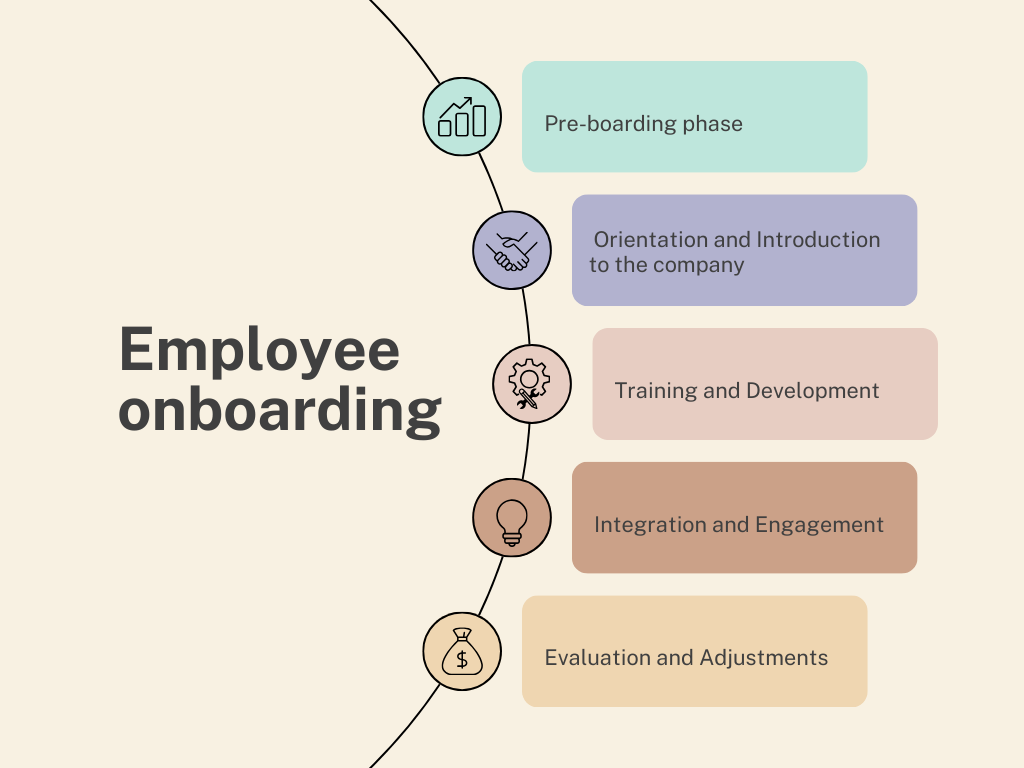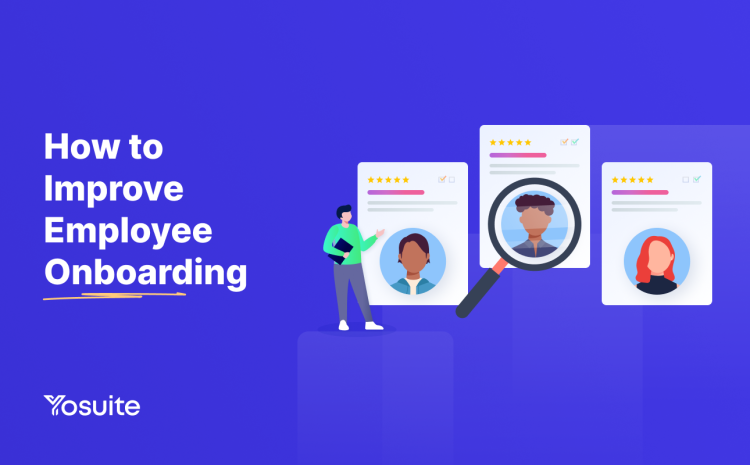Employee onboarding starts from the job confirmation.
Once you select a candidate for a particular position, you should initiate the process.
An improved onboarding system ensures that the candidate gets a good impression of the organization. It helps to build a better connection between the employee and employer.
In this blog post, I have discussed the particular methods you can follow to improve the onboarding system.
Improve employee onboarding system
Whether you have already implemented an onboarding system or just considered implementing one, improve in the following fields.
The right HR software
If you have the right Human Resource Management software, half of the task is done.
How?
The right selection of the software will come with most of the features that are require to onboard a new employee flawlessly.
For instance, it will have features like training, employee handbook, training and compliance, benefits leave, and more. To stay relieved from the beginning, choose the HR or HRM software that actually aligns with your company’s goals and targets.
If you are running a small business or a small company where the number of employees is not more than 100, you can easily find multiple options.
However, if the number of employees is more than this, custom HR software will be the perfect solution.
Proper onboarding plan
According to SHRM research, better onboarding can improve employee retention by 82%!
If you plan the onboarding from the beginning, you can ensure a great retention rate as well.
So, how do you make a great employee onboarding plan? It starts with the pre-plan phase and finishes with evaluation and adjustments.
Before you finalize a talent, make sure you have everything planned or written for the talent. It could be leave management, fringe benefits, orientation, training and development, and more.
Here is an image of how a perfect onboarding plan looks like.

Onboarding Kit
An onboarding kit introduces new employees to a company’s culture and brand with a welcome letter, handbook, policies, benefits info, forms, and sometimes company merchandise.
It can be given before onboarding or on their first day.
While you are preparing the onboarding kit, you shouldn’t miss any of the points.
When a new employee joins your organization and knows the benefits in detail, they will have a clear idea of what to expect.
Similarly, let the new employee know about all the policies in the beginning so it doesn’t cause any obstacles in the future.
An employee who joins an organization knowing all the details will rarely leave due to cultural issues.
Training and orientations
Regardless of how well you’ve set up your hiring process, providing training is essential for better results.
New employees might not be familiar with the company culture and procedures, so giving them proper orientation can help.
When employees understand the organization, they’re more likely to follow rules, leading to higher retention rates.
Evaluation and performance analysis
Everyone joins an organization with specific aims and goals, expecting to be evaluated based on their performance.
However, this isn’t the case in all organizations.
Some companies lack clear policies for performance evaluation, resulting in a low employee retention rate.
To improve onboarding and enhance retention, it’s crucial to establish a specific schedule for performance analysis. Ensure that new talents are informed about this policy.
Feedback from departing employee
Initially, this isn’t directly related to enhancing employee onboarding. However, collecting feedback from departing employees can be valuable later on.
In any organization, employees depart for a variety of reasons.
When they leave, offer them the opportunity to provide feedback about their experiences with the organization.
By obtaining feedback about specific areas, you can focus on improving those aspects during the onboarding process for new talents.
What are the 5 C’s of onboarding?
Here are the 5 C’s of onboarding —
Compliance
Compliances means ensuring that new hires complete all necessary paperwork and training to comply with legal and regulatory requirements.
This includes tasks such as filling out tax forms, completing safety training, and signing confidentiality agreements.
Clarification
Providing clarity to new employees about their roles, responsibilities, and expectations within the organization.
This involves clearly defining job duties, performance expectations, and organizational structure, and addressing any questions or concerns the new hire may have.
Culture
Introducing new employees to the company’s culture, values, and norms.
This includes familiarizing them with the company’s mission, vision, and core beliefs. It helps them understand the company’s history, traditions, and workplace dynamics.
Cultural integration is crucial for avoiding any mistakes from the new hires.
Connection
It means facilitating connections between new hires and their colleagues, managers, and other key stakeholders.
Building relationships within the organization helps new employees feel welcomed and supported, providing them with valuable resources and networks. These things encourage collaboration and teamwork.
Checkback
Following up with new employees to assess their progress, address any concerns, and provide ongoing support.
Regular check-ins, both during onboarding and afterward, are crucial. They assist new hires in adapting to their roles and the company.
Additionally, they pinpoint areas needing improvement and strengthen their dedication to the company’s success.
What is the fundamental goal of onboarding?
Smooth Integration: Integrate new employees seamlessly into the organization’s culture, workflows, and teams.
Clarity of Expectations
Clearly communicate job roles, responsibilities, and performance expectations to set the right foundation for success.
Training and Development
Provide necessary training and development opportunities to enhance skills and competencies required for the role.
Building Relationships
Facilitate relationship-building with colleagues, managers, and key stakeholders to foster a sense of belonging and collaboration.
Retention and Engagement
Promote employee engagement and satisfaction from the outset to improve retention rates and reduce turnover.
Understanding Organizational Culture
Educate new hires about the company’s values, mission, and vision to align their actions with organizational goals.
Efficiency and Productivity
Minimize the time taken for new employees to become fully productive by streamlining processes and offering necessary resources.
Feedback and Support
Establish channels for feedback and support to address concerns, provide guidance, and ensure ongoing improvement and adjustment.
How many types of onboarding are there?
There are generally three types of onboarding —
Formal Onboarding
This is a structured process that involves a planned orientation program, training sessions, and introductions to key personnel and company policies. Formal onboarding typically follows a set agenda and may involve the use of onboarding software or specific training modules.
Informal Onboarding
Informal onboarding is less structured and may involve ad-hoc introductions, informal discussions, and on-the-job learning. It relies more on the day-to-day interactions and mentorship from colleagues rather than a formalized program.
Virtual Onboarding
With the rise of remote work and virtual teams, virtual onboarding has become increasingly common.
It involves using digital tools and platforms to onboard new employees who may be working remotely or in a distributed team.
Virtual onboarding often includes video conferencing, online training modules, and digital collaboration tools to facilitate the onboarding process.
Final words
Apply the techniques to improve employee onboarding and create a better work environment for your employees. Remember that having the right talent and retaining them can boost the organization’s growth.



Leave a Reply